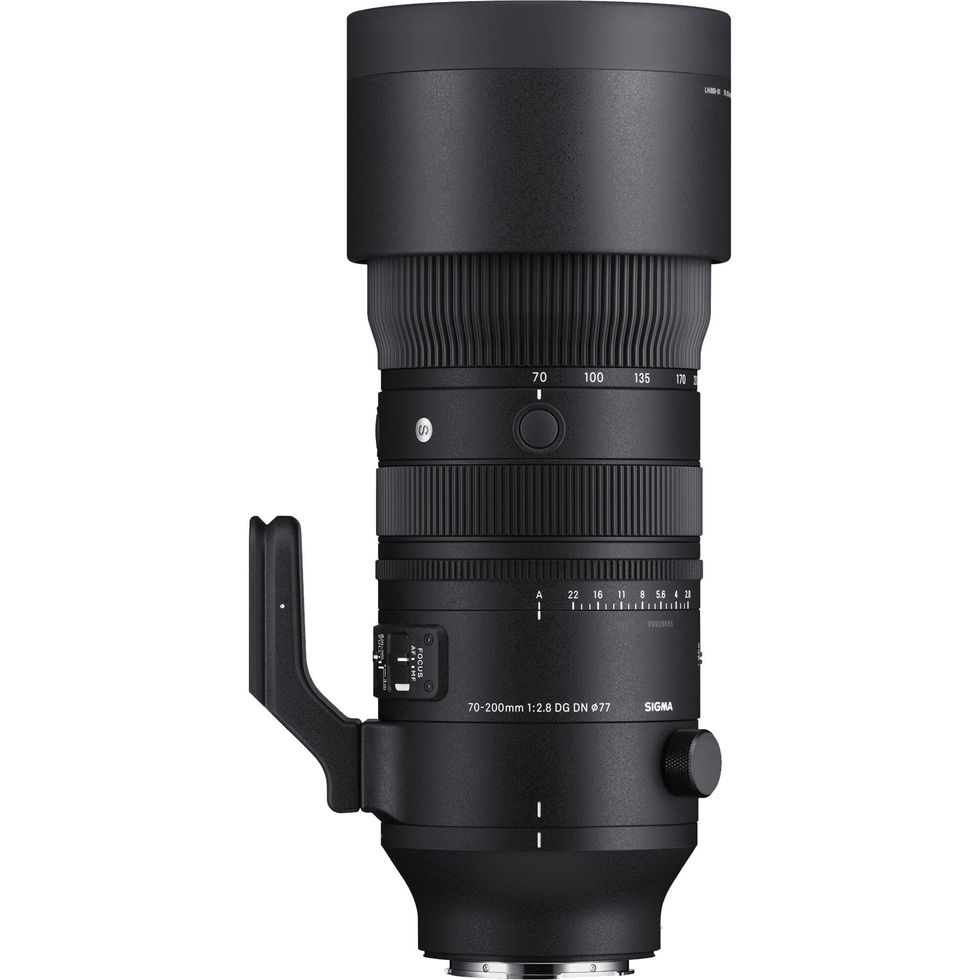
A good zoom lens is worth its weight in gold. It doesn’t matter if you shoot football or football (this matters depending on where you’re from) or if you’re on a big film set. Being able to have the reach of a zoom makes the difference between getting the shot or going home empty-handed.
The new Sigma 70-200mm F2.8 DG DN OS | Sports Lens is an upgrade from the DSLR version and makes itself at home when it comes to sports and wildlife.
But we think there’s a place for it in the cinema world. Give us a few minutes to pitch.
Fast and Far-Reaching
Sigma’s new zoom lens is a reliable and lightweight full-frame telephoto zoom lens with a decently fast aperture of f/2.8. This makes it a superb addition to your toolkit if you shoot nature, photojournalism, action sports, weddings, or portraits.
Creatives will get high optical performance thanks to special low-dispersion glass and high-speed AF with a dual High-response Linear Actuator.
An internal optical stabilizer with Sigma’s latest OS2 optical stabilization algorithm will provide 7.5 stops of stabilization at the wide end and 5.5 stops at the telephoto end. Depending on your needs, you’ll have two modes to choose from, which make the OS much more versatile.

The floating focus design allows for two focus groups to move in opposite directions, reducing the amount of focus lens movement by about half, at least according to Sigma. While this won’t remove focus breathing, the reduction should make it pleasing if not unnoticeable.
Best of all, the zoom mechanism is all internal, which should mean the lens won’t telescope when you travel throughout the focal length.
This will allow creatives to utilize matte boxes without worrying about the lens crashing into their filters.
The Sigma 70-200mm F2.8 DG DN OS will be available for Sony E-mount and Leica L-Mount. And this is where the cinema world opens up for us just a little bit more, at least for all the budget filmmakers.
Sigma, Blackmagic Design, and Sony

With the release of the BMCC 6K, Blackmagic Design has made the move away from the aging EF mount and into the mirrorless world. With its full-frame sensor, telephoto focal lengths won’t give you the punch you’ll need as the Super 35 BMPCC cameras give you.
Sigma’s new L Mount lens gives you the reach you need with the speed film productions require. Sure, some folks live in the f/5.6 space, but others just want to shoot wide open, and the 70-200mm gives you that.
But if you’re living in the Sony ecosystem, the E-Mount version of the 70-200mm lends itself to a myriad of documentary workflows. Even if you dip your toe into the narrative world, the 70-200mm will hold up when you’re shooting with longer focal lengths in mind.
And at $1,499 USD, it’s also cheaper than Sony’s 70-200mm G Master.
Is This A Lens You Need?
If you’re a creative who shoots on Sony, the Sigma 70-200mm F2.8 DG DN OS provides a more affordable alternative. If you have an L-Mount camera and need a good zoom without wanting to spend cinema lens prices, the 70-200mm seems like a good investment to us.
Sigma 70-200mm f/2.8 DG DN OS Sports Lens

The Sigma 70-200mm f/2.8 DG DN OS Sports Lens excels at capturing sports, wildlife, and weddings. The large f/2.8 aperture allows impressive performance throughout the entire zoom range and provides reliable low-light performance. Dual HLA (High-response Linear Actuator) motors enable high-speed autofocus, while Sigma’s OS2 algorithm effectively stabilizes images, giving up to 7.5 stops of correction.
Unless you can’t use anything but primes, Sigma’s new addition to the zoom world deserves to be on your shortlist. It’s attractively priced and has the specs to back it up. Combined it with the 14-24mm F2.8 DG DN Art and the 24-70mm f/2.8 DG DN Art, and you have a set of three lenses that can replace around nine different primes.
It’s also versatile enough to live both in the video and photography world, which makes it a winner in our book.
Author: Yaroslav Altunin
This article comes from No Film School and can be read on the original site.
